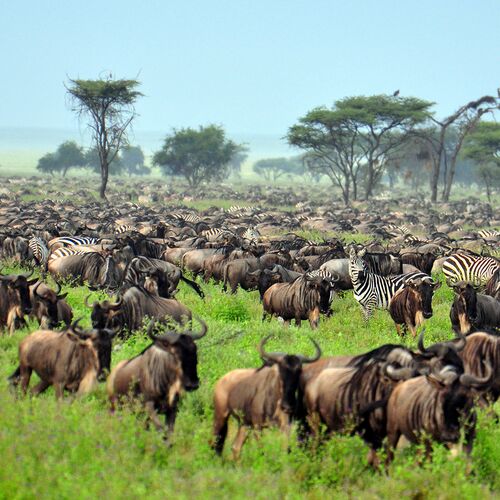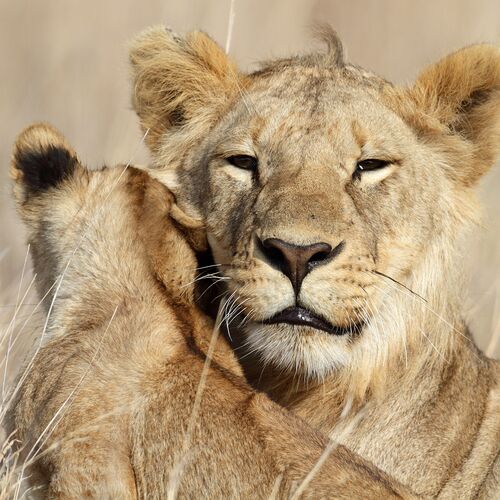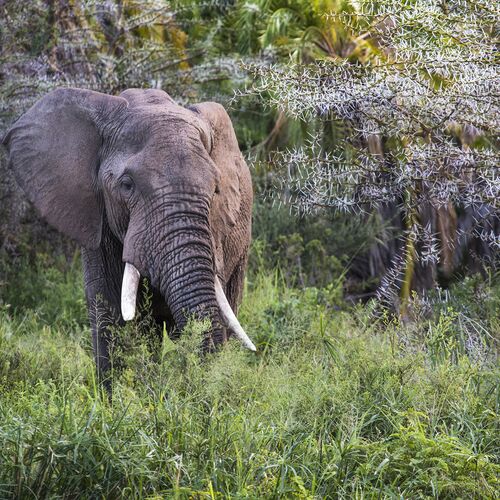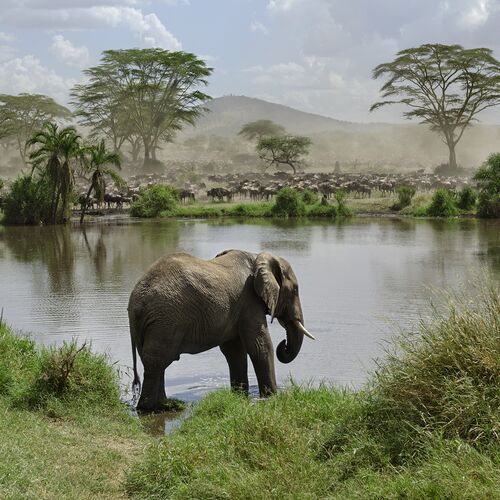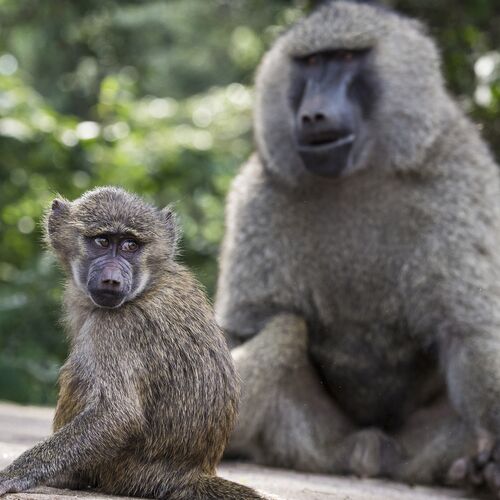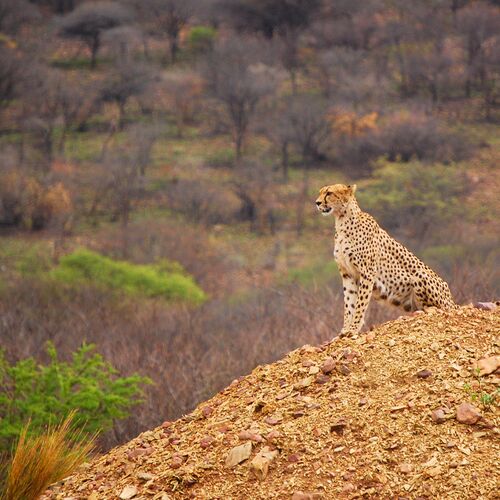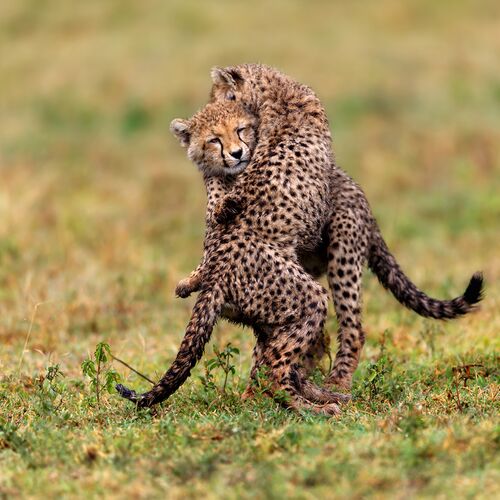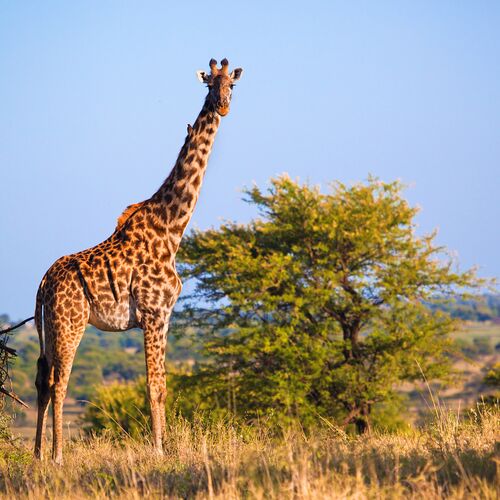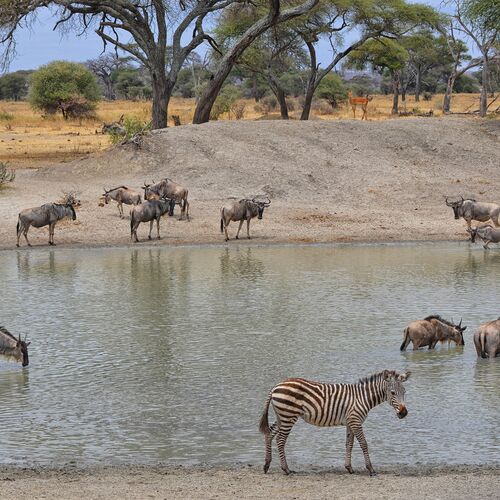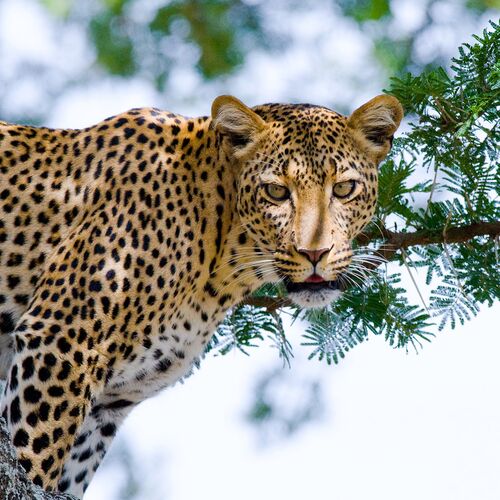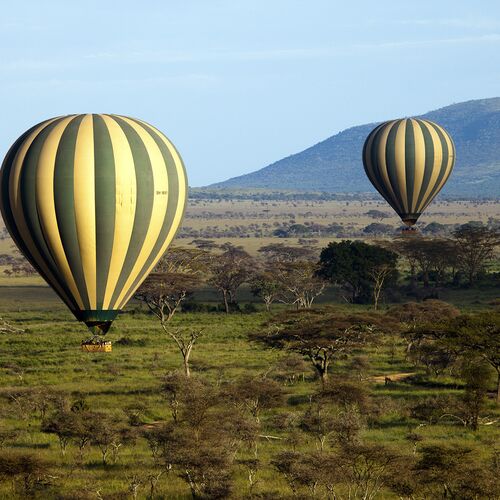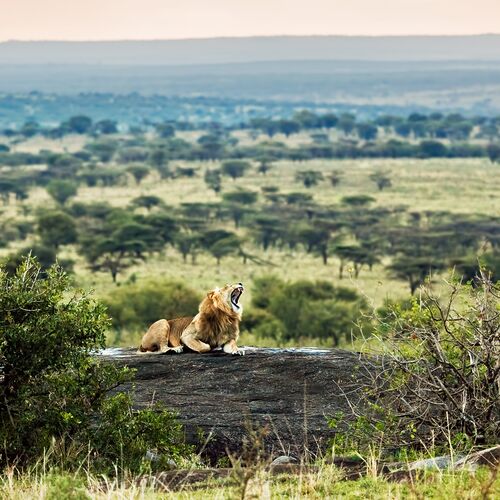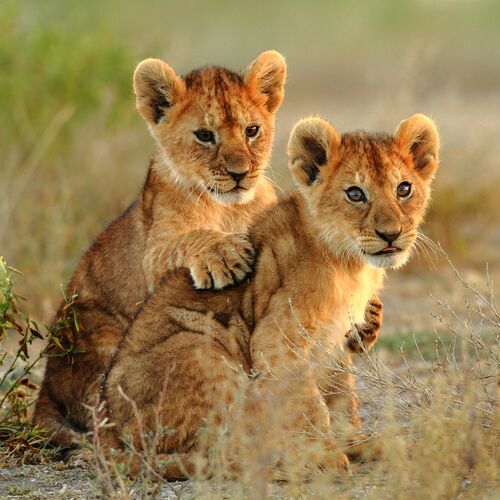The Serengeti National Park
This national park is easily one of the best known in the world –and for good reason. This almost endless ocean of grass which its huge herds of savannah animals is perhaps the image that more than any other, that most people associate with a classical African safari – even though similar type of savannah with its bushes - and trees actually covers a very large proportion of the continent. Countless TV broadcasts from this area can be held responsible for this. Most of all the Serengeti is famous for the huge herds that take part in The Great Migration, where nearly 1.5 million wildebeest and a quarter of a million zebras are moving around in a constant search for the best grazing. This great tide of animals has an underlying pattern that is repeated year after year, even though the exact route and season can vary somewhat depending on where and when the rain actually falls.
The migration is shared between the northern Serengeti and the Masai Mara in Kenya, where it can typically be found during the driest months of all, July to October. For many the peak of the migration is when the herds must cross the crocodile infested waters of the Mara river, which often produces some dramatic episodes. This drama can be experienced in both the northern part of Serengeti as well as in the Masai Mara. Another highlight is during our winter months when the wildebeest give birth to their young, when more than a quarter of a million calves are born on the short grass of the plains of the southern Serengeti, an event that also produces dramatic scenes.
The Serengeti also has an outstanding population of large predators that can often be found in and around the many gently rounded outcropping of rock that dot the savannah, the so called kopjes or koppies, and under the shadow of the trees growing along the rivers and streams. Lions and spotted hyenas are seen regularly, but cheetah and leopard are also seen on most safaris here. You can also see plenty of other big game animals including elephants, hippopotamus, buffalo, giraffe and numerous antelopes and gazelles. Small populations of the black rhinoceros are also present in the northern and south western areas of the park, but they are hard to find in this huge district.
The Serengeti national park, which covers an area of nearly 15,000 km2, is the center of a larger protected wildlife district and ecosystem, which also includes the Masai Mara in Kenya and the Ngorongoro, which together cover 40,000 km2 , close to the same size as Denmark. The name Serengeti is derived from a word from the local Masai tribes language, siringet, which means “the endless plains”. The park lies a good 300 km north west of Arusha, of which the first half of the drive up to the Ngorongoro crater is along good asphalt roads, but the rest of the journey is over gravel roads that can be bumpy in places. It is also possible to fly in/out of the Serengeti, as there are a number of gravel landing strips.
Highlights:
- Wildebeest giving birth to their young in the south between January and March, which attracts more than just tourists!
- Wildebeest and zebra crossing the Mara river in the north between July and October
- The many large predators, often seen in amongst the rocky outcrops and riverside trees
High season: January to March (in the south) and July to October (in the north)
These attractions can be seen on the following tours





